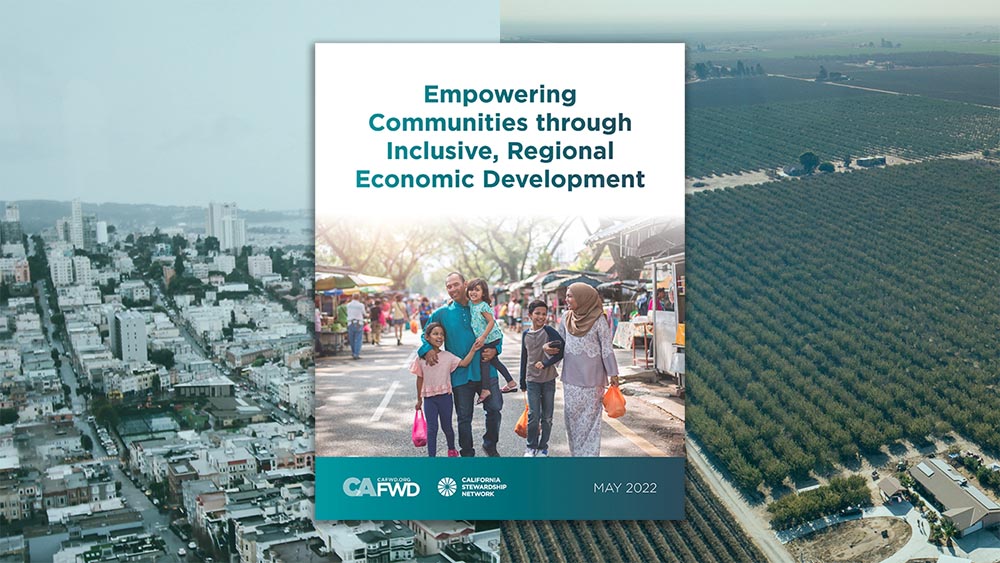
Inclusive, regional economic development is the creation and execution of strategies that generate more high-paying and promising jobs that create social equity and environmental sustainability within areas that share economic connections. Collaboratives working on these strategies across California have prioritized the right things toward creating equitable and environmentally-sustainable growth. But the quick rise of regions-up and community-centered economic development has often left regions with not enough time or resources to reflect on their own process and strategy toward these goals.
A report released today by CA FWD, Empowering Communities through Inclusive, Regional Economic Development, captures the lessons and best practices of these collaboratives. Through analysis, CA FWD developed a subsequent collection of helpful insights regions should consider when applying to funding opportunities, like the state’s new Community Economic Resilience Fund (CERF), a historic opportunity to create new strategies that diversify local economies and develop industries that create high-quality, broadly accessible jobs.
The CA FWD report is designed to be a catalyst for regional conversation and action — bridging gaps and developing a deeper understanding of regionalism — and provides a framework for understanding the landscape of regional economic development ecosystems in California. Report findings are the result of interviews with 32 regional leaders from across the state conducted from March-April 2022.
“This report allows us to tell our stories of regional collaboration to a broader audience to give them best practices to emulate and to give them hope that working together we can build a better future,” said CA FWD CEO Micah Weinberg.
Growing commitment and attention to inclusive regional economic development has raised a need for leaders across regions to lean on various supports, including tactics, to help them steward their regions well. The COVID-19 pandemic has more broadly evidenced the challenges within education, workforce, economic and other systems that do not bridge the gap between needs and Californian’s desires to pursue a more prosperous life. By supporting regional collaboratives, we can address challenges comprehensively and critically — with community input and design. This report elevates the challenges of doing regional economic development work, including resource constraints, reaching community, data collection, and partnerships and relationship-building.
“There is always room for improvement, and I think leadership in organizations need to be receptive to that. Not take it as an offensive, but mostly as constructive feedback to see how we can do more and better,” said Tahra Goraya, CEO of the Monterey Bay Economic Partnership and also a leader in the Regions Rise Together Salinas regional economic initiative. “So I think it’s just naming that, having that conversation, and course-correcting. How do we go about building that trust?”
The report reviews key themes and highlights promising practices extracted from regions and agreed upon as strong tools for this work. These promising practices categories include:
- Effectively delivering for regions and residents
- Using communication as a powerful tool for collaboration
- Success through partnerships
- Creating a space for authentic and meaningful community engagement
- Increasing ability to secure diverse funding sources
- Leveraging the power of data
- Building effective leadership
A key understanding is that inclusive, regional economic development happens because of a commitment to daily, on-the-ground work in communities. “We need to have more partners able to see that these transformative changes are not going to come in a year or two. It really needs to be dedicated work over a long period of time,” said Stephen Cheung, COO of Los Angeles Economic Development Corporation.
CA FWD is excited to offer various tools for regions including an open-membership community of practice and other supports to help regions rise. Watch this video for more information. CA FWD also has assembled a document with highlights from the state’s CERF Planning Phase Draft Guidelines. Be on the lookout for an updated highlights guide from CA FWD on the final CERF Guidelines, expected to be released by the state the week of May 23.
For more information on the report, joining the community of practice and more, please contact annalisa@cafwd.org

